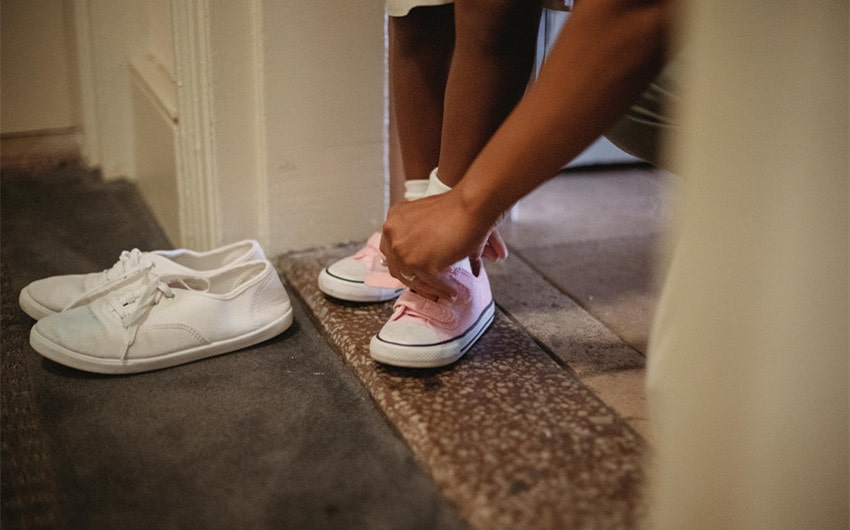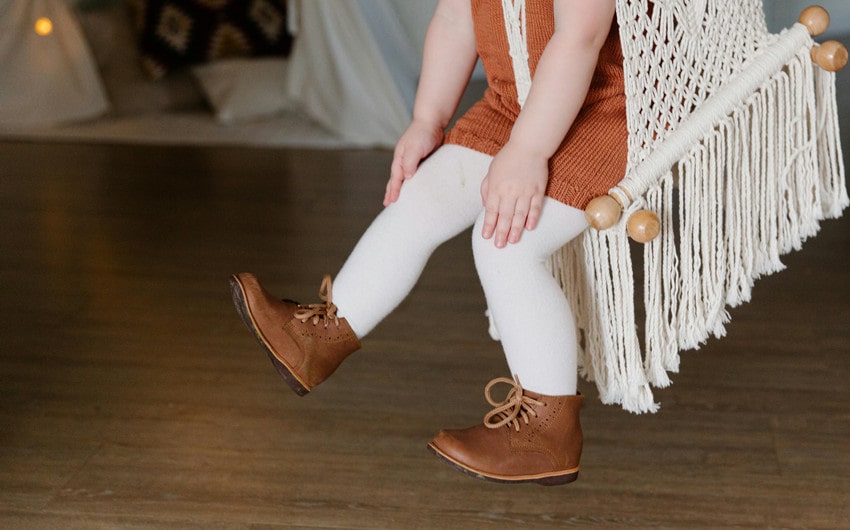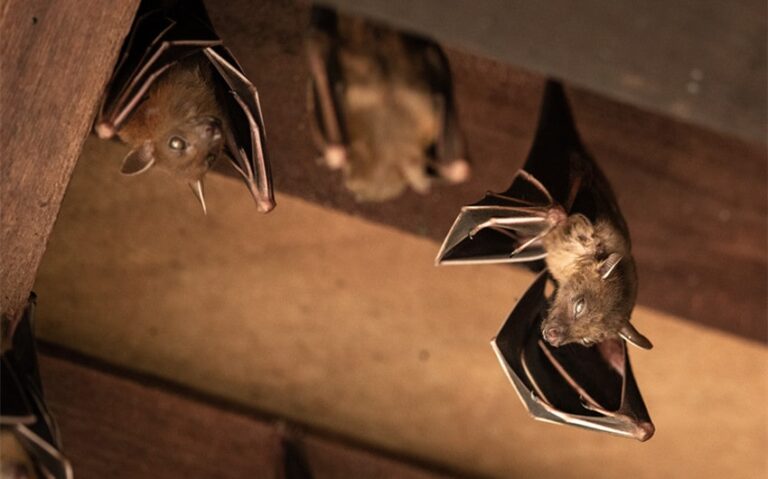What Does PS Mean in Shoes? A Parent’s Essential Guide
When shopping for kids’ shoes, you might come across various abbreviations on shoe boxes that can be confusing. One common question parents have is, “What does PS mean in shoes?” Understanding this term is key to ensuring you’re buying the right size and style for your child.
PS stands for “Preschool,” a sizing category specifically designed for kids aged 3 to 5. Knowing what this means can help you make better choices when selecting shoes that fit comfortably and support your child’s growing feet. Let’s explore this important detail further.
What Does PS Mean in Shoes?
The term “PS” in shoes stands for “Preschool,” and it refers to a specific sizing category used by many shoe brands to indicate footwear designed for children in the preschool age range, typically around 3 to 5 years old. This designation is essential for parents and guardians as it helps them identify shoes that are appropriately sized and constructed for children who are transitioning out of toddler sizes but are not yet ready for the larger grade school sizes.
PS shoes are designed to fit the feet of preschoolers, who have outgrown toddler sizes but still need footwear that offers the right balance of flexibility, support, and durability. The sizing typically follows a similar numbering system as other children’s shoes, but the shoes are specifically tailored to accommodate the growing feet of preschool-aged children.
This means that PS shoes are slightly more structured than toddler shoes, which are usually softer and more flexible to accommodate the needs of younger children who are just learning to walk.
Why Understanding PS Is Important

Understanding what “PS” means in shoes is crucial for several reasons, especially for parents and guardians who want to ensure their children have the best footwear for their developmental stage. This understanding can make a significant difference in your child’s comfort, foot health, and overall experience with their footwear.
1. Ensuring Proper Fit and Comfort
The primary reason to understand the PS sizing is to ensure that your child’s shoes fit properly. Preschoolers are at a stage where their feet are growing rapidly, and wearing the correct shoe size is essential to avoid issues such as blisters, discomfort, or even long-term foot problems.
Shoes that are too small can pinch and restrict movement, while shoes that are too large can cause instability, leading to trips and falls. The PS sizing category is designed to offer a fit that accommodates growing feet, providing the right balance between snugness and room to grow.
2. Supporting Healthy Foot Development
During the preschool years, children’s feet are still developing, and they require shoes that offer the right amount of support. PS shoes are specifically constructed to support the arches and ankles of young children, which is crucial for their overall foot health.
Without the right support, children can develop issues like flat feet or poor posture. By choosing the correct PS size, you’re ensuring that the shoes provide the necessary support to promote healthy foot development, which is important as your child becomes more active.
3. Avoiding Purchasing Mistakes
Understanding the PS designation helps you avoid common purchasing mistakes, such as buying shoes that are either too small or too large. Many parents might mistakenly choose shoes based on age rather than size, leading to improper fit.
Knowing that PS is specifically for preschool-aged children helps narrow down the choices and guides you toward the appropriate section in stores or online, saving time and reducing the likelihood of returns or exchanges.
4. Enhancing Your Child’s Comfort and Confidence
When children wear shoes that fit well and are designed for their age group, they are more likely to feel comfortable and confident. PS shoes are tailored not just in size but also in design to appeal to preschoolers, often featuring fun colors and patterns that kids love.
When children are happy with their shoes, they are more eager to wear them, which can make daily routines, such as getting ready for school, smoother and less stressful. Moreover, well-fitting shoes allow children to move freely, enhancing their ability to play, explore, and learn without distraction.
How to Choose the Right PS Size
Selecting the correct PS (Preschool) size for your child’s shoes is crucial for ensuring both comfort and healthy foot development. With children in this age group growing rapidly, it’s important to choose shoes that not only fit well but also accommodate their active lifestyle. Here’s how you can make sure you’re choosing the right PS size for your child:
1. Measure Your Child’s Feet Accurately
The first step in choosing the right PS size is to accurately measure your child’s feet. Children’s feet can grow quickly, so it’s recommended to measure them every few months. To do this at home, have your child stand on a piece of paper and trace the outline of both feet.
Measure the length from the heel to the longest toe and the width at the widest part of the foot. Be sure to measure both feet, as one foot is often slightly larger than the other, and always choose shoes based on the larger foot’s measurements. Many shoe stores also offer professional measuring services, which can provide an even more accurate assessment.
2. Consider Growing Room
When selecting a PS size, it’s important to account for a bit of growing room. While you want the shoes to fit well right away, allowing for some extra space—about a thumb’s width between the longest toe and the end of the shoe—ensures that the shoes will last longer as your child’s feet continue to grow.
However, be cautious not to choose shoes that are too large, as this can lead to slipping, tripping, and discomfort. The goal is to find a balance where the shoes are slightly roomy but still secure and supportive.
3. Understand Brand Variations
Different brands can have slight variations in sizing, so a PS size in one brand might not fit the same as a PS size in another. It’s important to check the specific size chart provided by the brand you’re purchasing from.
Many brands offer their own sizing guides online, which can help you translate your child’s foot measurements into the correct PS size for that brand. When possible, it’s a good idea to try shoes on in-store, or if shopping online, ensure that the retailer has a good return policy in case the size doesn’t fit as expected.
4. Assess the Shoe’s Fit
Even after you’ve measured and selected a size, it’s important to assess the fit of the shoe once your child tries it on. Have your child wear the shoes and walk around in them. Observe how the shoes fit at the heel, around the toes, and across the top of the foot.
The heel should be snug but not tight, and there should be no pinching or pressure points. The toes should have enough room to wiggle, and the shoes should flex naturally with your child’s foot as they walk. If possible, have your child try on the shoes with the type of socks they’ll typically wear, as this can affect the fit.
5. Take Activity Level into Account
Consider your child’s activity level when choosing PS shoes. Preschool-aged children are often very active, running, jumping, and playing throughout the day. Look for shoes that offer adequate support, especially in the arch and heel, to prevent discomfort and potential foot issues.
If your child is particularly active or involved in sports, you might opt for shoes with extra cushioning or reinforced areas, like the toe or heel, to withstand the extra wear and tear. Additionally, shoes with good traction can help prevent slips and falls during play.
6. Review Feedback and Recommendations
Before purchasing PS shoes, it can be helpful to read reviews or seek recommendations from other parents. Reviews often provide insights into whether a particular shoe runs large or small, how durable it is, and how comfortable it is for children in the PS age range. Additionally, asking for recommendations from friends, family, or online parenting communities can point you toward brands or styles that have worked well for other children.
FAQ: Common Questions About Buying PS Shoes

1. How do I know if my child has outgrown their PS shoes?
- A clear sign that your child has outgrown their PS shoes is if you notice their toes pressing against the front of the shoe or if they frequently complain about discomfort. Another indicator is increased wear and tear, particularly at the heel or toe areas, which can suggest that the shoes are no longer fitting properly. Regularly check for these signs and measure your child’s feet every few months to ensure they’re wearing the right size.
2. Can I buy PS shoes a size bigger to last longer?
- While it might be tempting to buy a size up so the shoes last longer, it’s generally not recommended. Shoes that are too large can cause your child to trip or develop blisters from the foot sliding inside the shoe. It’s better to choose a size that fits well with a small amount of growing room—about a thumb’s width at the toe—rather than a significantly larger size.
3. Are PS shoes different for boys and girls?
- The primary difference between PS shoes for boys and girls usually lies in the design and color options, rather than the actual fit. However, some brands might offer slight variations in width or overall shape based on gender. It’s important to focus on the fit and comfort rather than strictly adhering to gender-specific shoes, especially if your child prefers a style that’s traditionally marketed for the opposite gender.
4. How often should I replace my child’s PS shoes?
- On average, children in the PS size range may need new shoes every three to six months due to rapid growth. However, this can vary depending on your child’s growth rate and how quickly their shoes wear out. It’s a good idea to check the fit and condition of their shoes regularly and replace them when they show signs of wear or no longer fit properly.
5. Can PS shoes be used for sports or are they just for casual wear?
- PS shoes can be suitable for casual wear and some light physical activities, but if your child is involved in specific sports, it’s advisable to invest in sport-specific footwear. Athletic shoes designed for activities like running, soccer, or basketball offer the necessary support, cushioning, and traction that standard PS shoes might not provide.
6. How can I make PS shoes last longer?
- To extend the life of your child’s PS shoes, ensure they are worn for the appropriate activities and stored properly when not in use. Rotate between different pairs if possible. Additionally, clean the shoes regularly according to the manufacturer’s instructions to maintain their appearance and durability.







